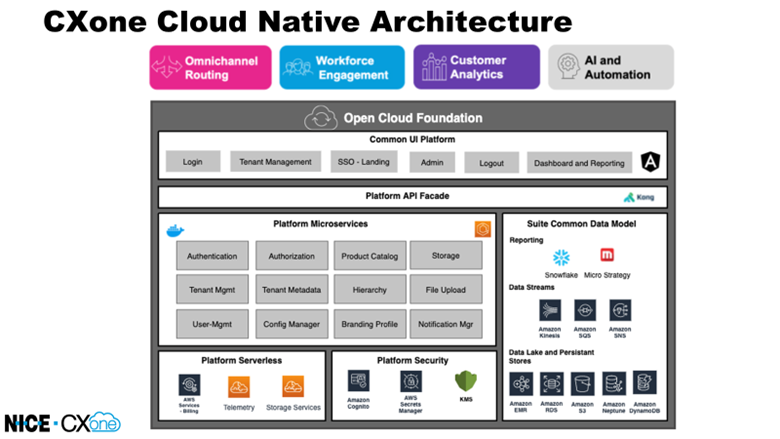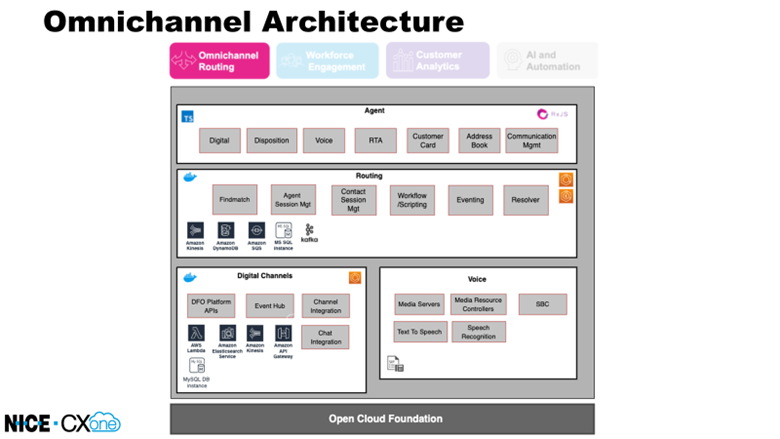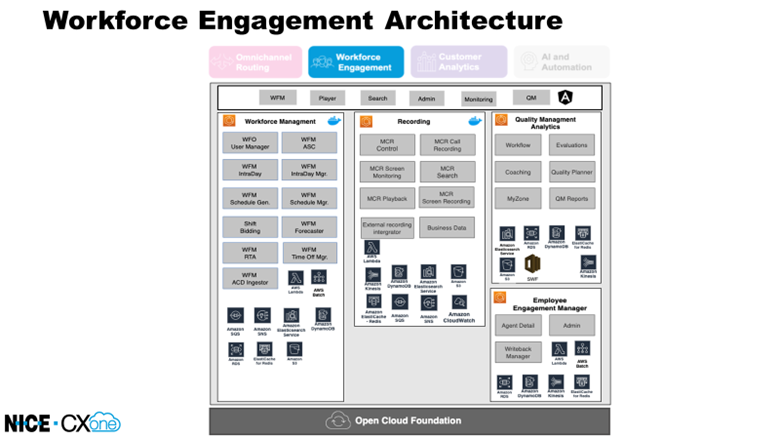NiCE employs its own telecom network for CXone Mpower. The network utilizes paired SS7 links and redundant SS7 proxies. SS7 is used to control calls in each data center. It is also used to ensure fault tolerance and redundancy.
The VolP![]() Protocol used for conducting communications and multimedia sessions over the Internet. network uses redundant SIP
Protocol used for conducting communications and multimedia sessions over the Internet. network uses redundant SIP![]() Protocol used for signaling and controlling multimedia communication sessions such as voice and video calls. trunks to its carriers. Each SIP carrier is provisioned in each paired data center. CXone Mpower data centers are located in:
Protocol used for signaling and controlling multimedia communication sessions such as voice and video calls. trunks to its carriers. Each SIP carrier is provisioned in each paired data center. CXone Mpower data centers are located in:
-
Los Angeles/Dallas in the United States
-
Frankfurt/Munich in Europe
-
Melbourne/Sydney in Australia
-
Sao Paulo in Brazil
-
Canada
-
Singapore
-
Tokyo Japan
-
The United Kingdom
The data centers provide VolP network redundancy.
All SIP services are processed through Session Border Controllers (SBCs). SBCs are redundant and fault tolerant. They are deployed in each data center. SBCs are functionally VolP firewalls.
NiCE utilizes Tier 1 national carriers to provide:
-
Diverse, toll-free (TF) routes.
-
Long-distance termination routes.
All telecom and internet services are provisioned as redundant pairs or groups of services.
In the USA, services are designed to allow NiCE to process telecom services for CXone Mpower, including:
-
Toll-free routes (TFs)
-
Direct Inward Dialing (DIDs
 Direct Inward Dial (DID). Service that assigns a unique phone number to each employee without a phone line for each number.)
Direct Inward Dial (DID). Service that assigns a unique phone number to each employee without a phone line for each number.) -
International TFs (ITFs)
-
International DIDs
-
Long-distance calls via each of its USA data centers.
In the USA, NiCE is a full service Responsible Organization (RESPORG). This allows the company to route and reroute TF numbers between different carriers. Doing so distributes traffic among multiple carriers. It also reduces the risks and impacts of losing a single carrier.
In Europe, services are designed to allow CXone Mpower to process telecom services, including:
-
ITFs.
-
International DIDs.
-
Long-distance calls from each of its data centers.
NiCE has deployed the following to each of its voice processing centers:
-
A redundant Sonus Softswitch.
-
SBC.
NiCE designs telecom and internet networks to detect carrier and component failures. After detection, they redirect new voice and data traffic. The networks route the new traffic to redundant, alternative facilities.
The following diagrams show the architecture of CXone Mpower applications.




